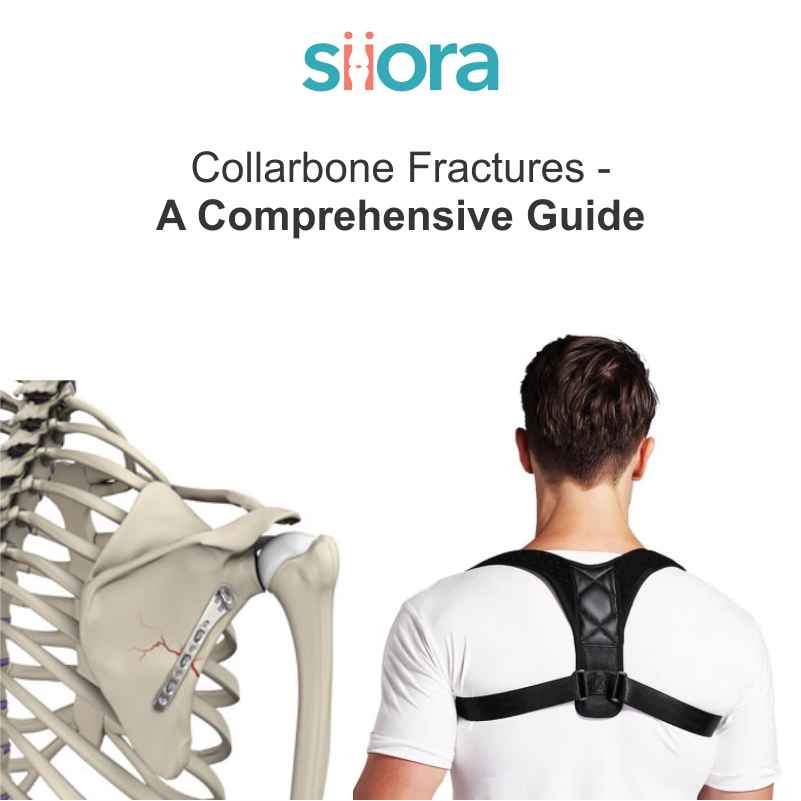The shoulder, a complex and versatile joint, plays a crucial role in our daily activities. However, like any other part of the body, it is susceptible to injuries, with shoulder fractures being a common occurrence. Shoulder fractures can result from various causes, ranging from traumatic accidents to degenerative conditions. In this comprehensive guide, we will delve into the intricacies of shoulder fractures, exploring their causes, types, and available treatment options.
Causes of Shoulder Fractures
Shoulder fractures, a common orthopedic concern, stem from a variety of causes that range from traumatic incidents to degenerative conditions. One primary cause is traumatic injury, often occurring due to falls, sports-related accidents, or automobile collisions. The impact on the shoulder joint during such events can lead to fractures in the key bones that compose the shoulder structure.
Clavicle fractures, for instance, are frequently a result of a direct blow to the shoulder or a fall onto an outstretched arm. The collarbone, being vulnerable to external force, can crack or break under significant pressure. Scapula fractures, though less frequent, often arise from high-impact traumas like motor vehicle accidents. The scapula, or shoulder blade, may sustain fractures with symptoms including intense pain, swelling, and restricted movement.
Humerus fractures, affecting the upper arm bone, commonly occur near the shoulder joint and are associated with severe trauma. The impact may result in substantial pain, swelling, and bruising. Identifying the specific cause of a shoulder fracture is crucial for accurate diagnosis and determining the most effective treatment plan. Whether resulting from a sudden fall or a high-impact accident, understanding the diverse causes of shoulder fractures lays the foundation for targeted medical intervention and rehabilitation strategies.
Types of Shoulder Fractures
Clavicle Fractures
Among the most common shoulder fractures, clavicle fractures occur when the collarbone is broken. This type of fracture typically happens due to a direct blow to the shoulder or a fall onto an outstretched arm. Clavicle fractures can range from a simple crack to a complete break and are often characterized by pain, swelling, and difficulty moving the arm.
Scapula Fractures
Fractures in the scapula, or shoulder blade, are less common but can result from high-impact trauma, such as a motor vehicle accident. Scapula fractures may cause intense pain, swelling, and limited range of motion. Identifying and treating scapula fractures promptly is essential to prevent long-term complications.
Humerus Fractures
Fractures in the humerus, the upper arm bone, can occur near the shoulder joint or further down the arm. These fractures are often associated with significant trauma and may result in severe pain, swelling, and bruising. In some cases, the fracture may require surgical intervention for proper alignment and healing.
Diagnosis and Evaluation
Physical Examination
- Thorough physical examinations are conducted to assess the shoulder’s range of motion, strength, and tenderness.
- Healthcare professionals look for signs of trauma or instability in the shoulder region during this examination.
Imaging Studies
- X-rays are commonly used to capture detailed images of the bones in the shoulder, revealing fractures, misalignments, or abnormalities.
- In cases requiring a more intricate view, computed tomography (CT) scans provide three-dimensional images of the shoulder structures.
Patient History
- Gathering the patient’s medical history is a crucial aspect of the diagnostic process.
- Understanding the circumstances leading to the injury, the nature of the trauma, and any pre-existing conditions helps form a comprehensive diagnostic picture.
Integration of Information
- Healthcare providers integrate insights gained from physical examinations, imaging studies, and patient history.
- This comprehensive approach ensures an accurate diagnosis of the type and severity of the shoulder fracture.
Treatment Options for Shoulder Fractures
Conservative Management
In cases where the fracture is stable and the bones are not significantly displaced, conservative management may be recommended. This approach often involves immobilizing the shoulder with a sling or brace to allow the bones to heal naturally. Pain management and physical therapy may also be incorporated to restore strength and range of motion.
Surgical Intervention
Surgical intervention may be necessary for more complex fractures or cases where the bones are displaced. Common surgical procedures include the use of pins, orthopedic plates, or orthopedic screws to stabilize the fractured bones and promote proper healing. Surgical options vary based on the type and location of the fracture, as well as the overall health and lifestyle of the patient.
Rehabilitation and Physical Therapy
Regardless of the chosen treatment method, rehabilitation and physical therapy play a crucial role in the healing of a fracture. These interventions help restore strength, flexibility, and function to the shoulder joint. A gradual and structured rehabilitation program, under the guidance of a qualified physiotherapist, can significantly improve the overall outcome of shoulder fracture treatment.
Prevention and Lifestyle Considerations
While not all shoulder fractures can be prevented, adopting certain lifestyle modifications can reduce the risk of injury. Engaging in regular exercise to strengthen the muscles around the shoulder, maintaining proper posture, and using protective gear during sports or physical activities are essential preventive measures. Additionally, individuals should be cautious in their daily activities, especially when navigating slippery surfaces or engaging in activities with a risk of falls.
Conclusion
Shoulder fractures can significantly impact an individual’s daily life, causing pain and limiting functionality. Understanding the causes, types, and treatment options for shoulder fractures is vital for making informed decisions about one’s health. Whether opting for conservative management or surgical intervention, seeking prompt medical attention, and adhering to a comprehensive rehabilitation program are key steps in achieving a successful recovery. By prioritizing prevention and adopting a proactive approach to shoulder health, individuals can minimize the risk of fractures and maintain the optimal function of this crucial joint.
About Siora Surgicals
Siora Surgicals Pvt. Ltd. is a leader in the orthopedic implants manufacturing industry. Having served hundreds of orthopedic distributors and surgeons in 50+ countries for more than 30 years, the company has marked a strong position in the global orthopedic market. Siora manufactures hundreds of different types of CE-certified orthopedic implants including Shoulder arthroscopy implants, spine implants, orthopedic locking plates, external fixator devices, and more. If you are looking to become an orthopedic distributor in Jordan, Qatar, or Nigeria, contact us.








